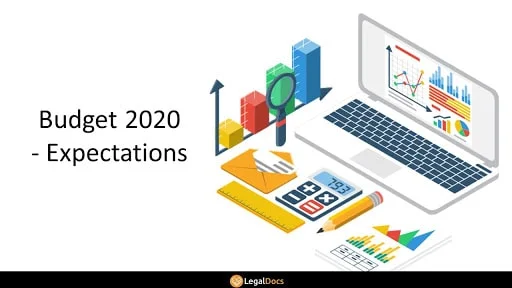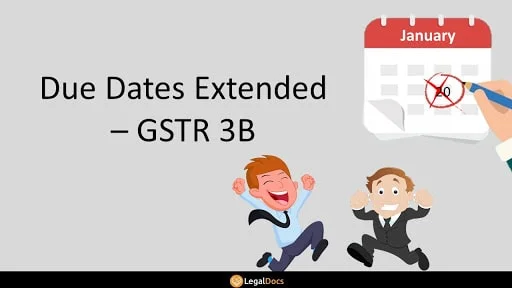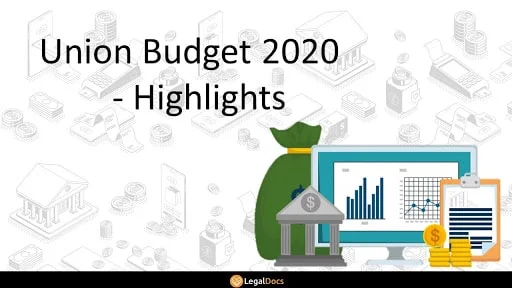Union Budget 2020 Expectations
Ministry of Finance is very busy with the planning for the upcoming financial year 2020-21. The union budget date for FY 2020 is scheduled for 1st February 2020. The finance minister Mrs. Nirmala Sitharaman has quite a few things on her table, ranging from slowing demand, low industrial output and the overall GDP growth pegged at an 11-year low of 5\\\%.
It is also expected that Finance Minister Nirmala Sitharaman is likely to in the next few hours deliver a “growth-oriented, capital market-friendly and pragmatic” budget with the main thrust on increasing demand in the economy, especially in semi-urban and rural India.
There are various such expectations for the Budget 2020 -21, which we will have a look at the article below.
The Expectations from Union Budget 2020
Class flow boosting for the middle-class taxpayer
The finance ministry is considering relaxing personal income tax rates in the upcoming Budget 2020.
The present rates consist of 5\\% for income slab from Rs 2.5 to 5 lakh, 20\% for income slab from Rs 5 to 10 lakh and 30\% for income slab from Rs 10 lakh and above.
There is a significant tax outgo for an individual earning income between Rs 5 to 10 lakh. A cut in the tax rate from 20\% to 10\% would increase the disposable surplus in the hands of the middle-class. The middle class also the growth driver for the economy.
Savings boost for individuals
Section 80C accounts for most of the tax savings of individuals. It includes investment in government securities, LIC, mutual fund ELSS along with payments for children’s tuition fees and housing loan repayment, all under the overall limit of Rs 1.5 lakh.
The limit under section 80C was last enhanced in the budget of 2014. Education costs and housing loan repayments form a significant part of the financial commitments for an individual.
Consequently, the section leaves less room for savings. The government could enhance the limit under section 80C to give a much-needed boost for public savings.
The Low Tax Rate for Partnerships and LLPs firms
There are MSMEs consisting of partnership firms and Limited Liability Partnerships (LLPs) who pay tax at 30\% (excluding surcharge and education cess).
While the government has conferred a tax cut on corporates and manufacturing companies, the other forms of business enterprises still pay high taxes at 30\%.
The government could reduce the tax rate for these business enterprises to create a level playing field among MSMEs.
The government could aid capital intensive MSMEs for their investments in plant and machinery. The investments could be incentivized through a deduction under section 32AC.
The Section was introduced in the union budget in 2013 to encourage investment in new plant and machinery by companies. The deduction was allowed in addition to the depreciation allowance. The minimum investment threshold was Rs 25 crore.
The section can be revamped to confer deduction benefits to MSMEs with a lower investment threshold and for a time horizon of 1-2 years.
Sector-Specific Incentives
The finance ministry has held meetings with representatives from various sectors and industrialists for the upcoming Budget 2020. Sectors such as non-banking financial companies (NBFCs), real estate, infrastructure have been suffering a lack of demand and finances. The government, though it has outlined a plan for real estate and infrastructure, the mechanics are yet to be worked out. The government could aid the infrastructure plan through the issue of long term tax-deductible infrastructure bonds.
New GST Returns
The Union FM may tweak the GST laws to prepare taxpayers for the new GST return filing system effective from April 1, 2020. The rules may be altered to accommodate the new returns in form RET-1 or RET-2 or RET-3 along with annexures in ANX-1 and ANX-2.
GST Rate Cuts
GST rate cuts have over the last two years have led to dwindling revenue collections. A phased increase in the GST rates has been favored by many economists.
However, the auto sector is looking forward to a rate cut in automobiles from 28 percent to 18 percent. Additionally, there is a possibility of exemption from customs duty of 5 percent for lithium-ion batteries. Followed by this, the health care segment expects to have the health care services zero-rated product under GST. Similarly, various items falling between 18 percent and 28 percent may be contemplated for a single rate.
While the government is also running on a tight fiscal situation with lesser than expected tax collections and disinvestment collections. An increase in the disposable surplus in the hands of individuals can help revive consumer demand. Apart from this, the government can consider mobilizing public savings through section 80C and the issue of corporate bonds through top-rated PSUs.
 Knowledge Center
Knowledge Center


























LEAVE A REPLY: